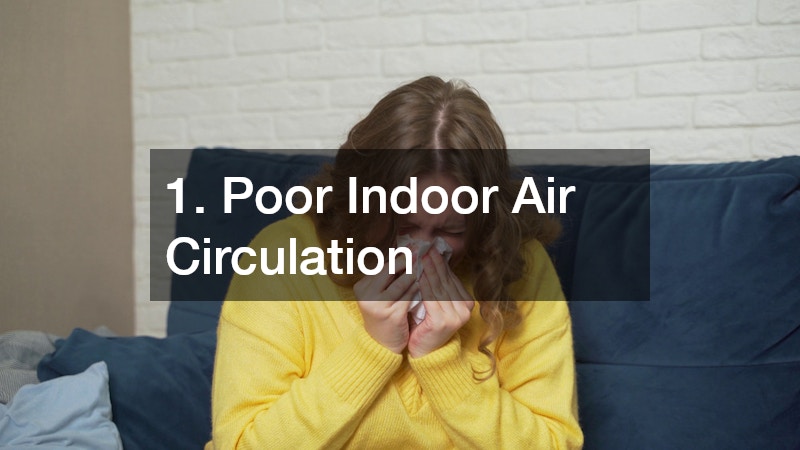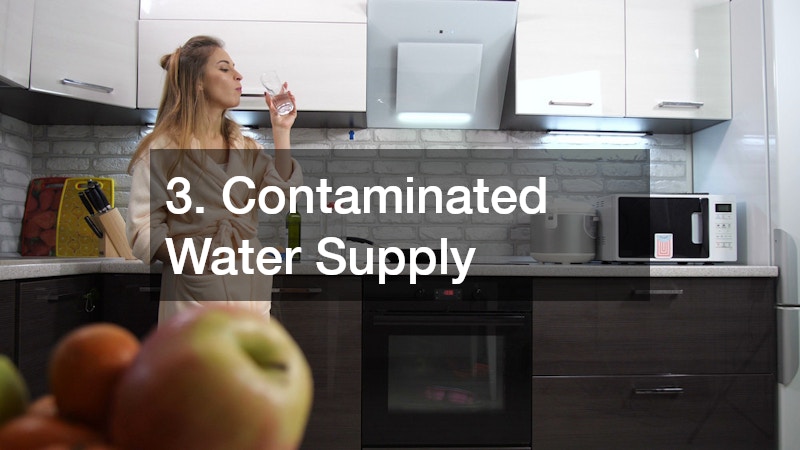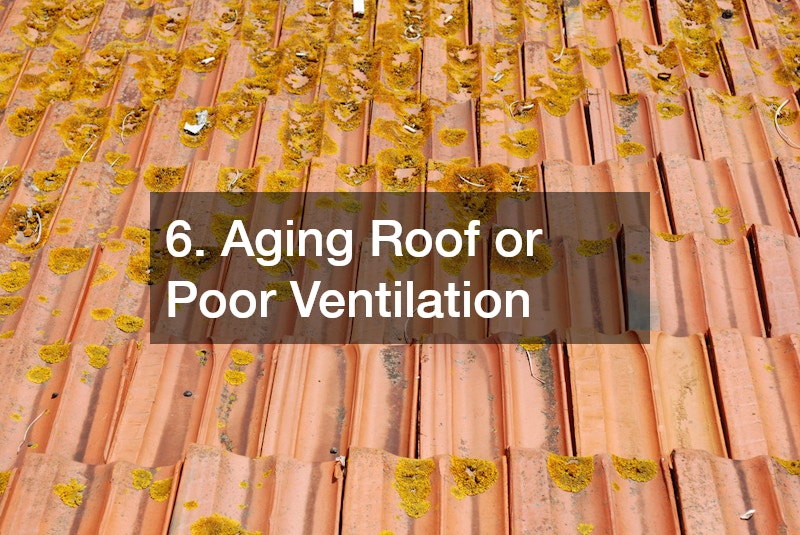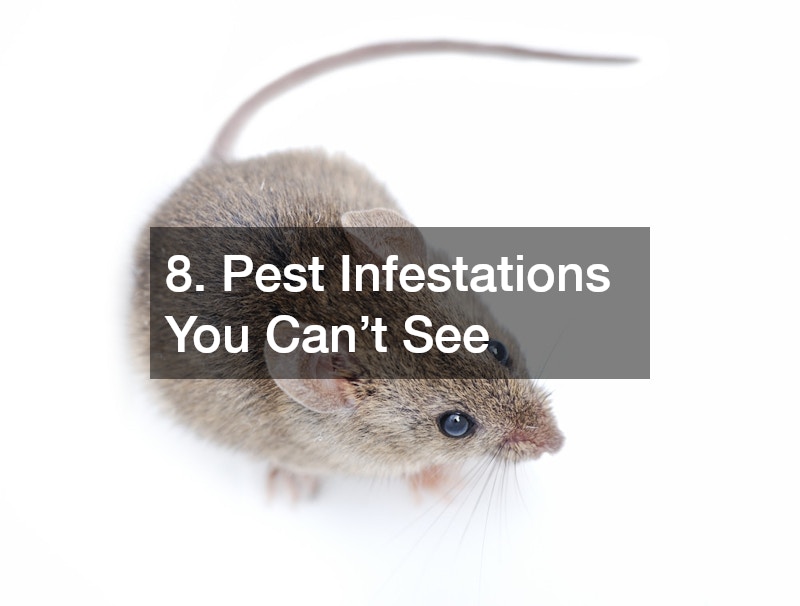Your home is more than just walls and a roof—it’s a living system. Every vent, pipe, wall cavity, and even the air you breathe contributes to your home’s overall health. But just like people, homes can develop hidden problems that quietly affect their well-being—and yours too.
A “healthy home” isn’t only about looking clean or smelling fresh. It’s about maintaining the unseen systems that keep your environment safe, efficient, and comfortable. Unfortunately, many of the biggest threats to a home’s health aren’t visible until they’ve caused major damage.
Below, we’ll uncover ten often-overlooked factors that can quietly undermine your home’s health and show you what you can do to fix or prevent them.
What Is a Healthy Home?
A healthy home is one that supports your physical well-being, mental comfort, and financial peace of mind. It’s free from hidden hazards like mold, poor air quality, electrical risks, and pest infestations. It’s also a space where systems like plumbing, ventilation, and roofing work efficiently to prevent damage before it starts.
Think of your home like a body—it breathes through vents, digests through drains, and has arteries (wires and pipes) running throughout. When one system is clogged or weak, it affects everything else. The goal is balance: a home where air, water, and energy flow freely without contamination or restriction.
1. Poor Indoor Air Circulation

You can’t see air, but it has a huge impact on how healthy your home feels. Poor air circulation leads to stuffy rooms, uneven temperatures, and a buildup of dust, allergens, and moisture. If certain rooms always feel damp, stale, or hard to cool, your ventilation might be the problem.
When air doesn’t move freely, it allows pollutants to linger—like carbon monoxide, pet dander, or cleaning chemical fumes. This not only affects comfort but also your health, especially for anyone with asthma or allergies. Poor airflow can also make your HVAC system work harder, increasing energy costs and wear over time.
If you’re dealing with persistent airflow issues, HVAC companies can help by inspecting ductwork, balancing air pressure, and ensuring your system distributes air evenly throughout the home. They can also recommend upgrades like smart thermostats or better filters to improve overall air quality and efficiency.
Ways to improve air circulation include:
-
Opening windows regularly, especially in the morning and evening.
-
Using ceiling fans or exhaust fans in high-moisture areas like bathrooms and kitchens.
-
Scheduling routine HVAC maintenance to keep air filters clean.
-
Avoiding furniture placement that blocks vents or return air ducts.
It’s amazing how much fresher a home feels once air starts flowing properly again.
2. Hidden Mold and Moisture Buildup
Mold is the silent enemy of home health. It thrives in dark, damp corners—behind walls, under sinks, or even inside air ducts. The problem is, you often don’t know it’s there until you start noticing musty odors or unexplained allergies.
Even small leaks, like a dripping pipe joint or a poorly sealed window, can create perfect conditions for mold. Over time, it can damage drywall, weaken structural materials, and release spores that impact indoor air quality. Many of these moisture issues stem from unnoticed plumbing leaks, so staying on top of plumbing repairs is crucial. Fixing minor leaks early prevents hidden water from seeping into walls or flooring where mold can silently spread.
Warning signs of hidden mold include:
-
Persistent damp smells even after cleaning.
-
Peeling paint or bubbling wallpaper.
-
Unusual dark spots or discoloration near corners and baseboards.
If you find or suspect mold, don’t just clean the surface—address the source of moisture first. Consider hiring a professional mold remediation service if the problem seems widespread. Keeping humidity levels below 50% with a dehumidifier can also help prevent future growth. And remember, prevention often starts with regular inspections and prompt repairs to keep unwanted moisture from taking hold.
3. Contaminated Water Supply

You expect clean, safe water every time you turn on the tap—but hidden contaminants can change that. Whether from aging pipes, corroded plumbing, or local supply issues, water can carry lead, rust, or bacteria without looking or tasting different. Over time, these impurities can not only affect your health but also shorten the lifespan of your plumbing fixtures and appliances.
If you’ve noticed discoloration, odd smells, or cloudy water, it’s worth testing your supply. Water quality can shift depending on where you live or even the time of year, especially if your area relies on well water or older municipal systems.
Common causes of water contamination include:
-
Old galvanized or lead pipes leaching metal into the water.
-
Backflow from poorly maintained septic systems.
-
Mineral buildup that changes taste or clarity.
-
Local construction disturbing underground pipes.
Installing a whole-home water filtration system or even a simple under-sink filter can make a big difference. In areas with hard water, water softener systems can also help by reducing mineral content, preventing buildup in pipes, and improving the overall quality of your drinking and bathing water. You can also have your water professionally tested once a year to ensure it’s safe for drinking, bathing, and cleaning.
4. Dirty or Clogged Drains
Clogged drains aren’t just annoying—they can indicate a deeper hygiene problem in your plumbing system. Over time, buildup from grease, soap scum, food particles, and even hair creates blockages that trap bacteria and emit foul odors. These clogs can also lead to slow drainage, standing water, and in severe cases, leaks that damage floors or cabinetry.
A slow drain may seem minor, but it’s often a sign that debris is collecting deeper in the pipes. Left unchecked, this can cause backups, leaks, and even water contamination in other parts of the house. If recurring clogs or foul smells keep coming back, it may be time to call professional drain services to inspect your plumbing and remove stubborn buildup safely without harming your pipes.
Keep your drains healthy by:
-
Avoiding pouring grease or coffee grounds down the sink.
-
Using drain strainers to catch hair and food.
-
Running hot water after each use to clear minor residue.
-
Scheduling an annual professional drain cleaning, especially for older homes.
A clean drainage system isn’t just about convenience—it prevents health hazards caused by stagnant water, bacteria, and pests that breed in damp, clogged areas. Regular maintenance helps your plumbing flow freely and keeps unpleasant surprises at bay.
5. Neglected Water or Flood Damage
Many homeowners underestimate how long moisture can linger after a leak or flood. Even after surfaces look dry, hidden water can remain trapped under floors or inside walls, leading to rot, mold, and weakened structural components. What seems like a minor spill or leak can quietly escalate into a major issue if not addressed properly.
If your home has ever experienced flooding—even minor—it’s crucial to inspect for hidden damage. Wooden framing, insulation, and drywall can retain moisture for weeks, silently deteriorating behind the scenes. Over time, this trapped moisture can attract pests, warp materials, and even compromise your home’s foundation.
What you should check after water damage:
-
Warping or soft spots in floors and walls.
-
Musty smells that persist after cleaning.
-
Stains or discoloration on ceilings and baseboards.
-
Signs of rust on metal fixtures or nails.
Quick action is key. Dry the affected areas thoroughly with dehumidifiers and fans, and consider calling a water damage company if large sections were exposed or if mold has begun to form. These professionals have specialized equipment to detect moisture behind walls and ensure your home is completely dry before repairs begin. Neglecting these steps can lead to expensive structural issues and persistent indoor air problems later on.
6. Aging Roof or Poor Ventilation

Your roof is your home’s first line of defense—but it’s easy to forget about it until you see a leak. An aging roof or poorly ventilated attic can trap heat and moisture, causing mold growth, insulation breakdown, and higher energy bills. Over time, this trapped moisture can also damage wooden beams and create the perfect environment for pests or mildew to thrive.
Even if your shingles look fine from the ground, damage can occur underneath. Cracked flashing, missing tiles, or blocked vents can create slow leaks that seep into your ceiling over time. Small issues like these can snowball into serious structural problems, especially during heavy rains or hot, humid weather.
Warning signs of roof and ventilation problems:
-
Dark streaks or sagging areas on the ceiling.
-
A hot, stuffy attic even during cooler weather.
-
Rusty or moldy spots around vents and chimneys.
-
Peeling paint near rooflines.
Regular roof inspections—especially after storms—help catch issues early. Reputable roofing services can spot problems you might miss, such as hidden leaks, poor attic airflow, or worn insulation. Combine routine maintenance with proper attic ventilation to keep your home dry, energy-efficient, and well-protected year-round. If moisture or damage accumulates, professional repairs or a full roof replacement might be the best long-term solution.
7. Undetected Electrical Hazards
Outdated wiring and hidden electrical issues can turn your home into a silent danger zone. Many older houses still rely on wiring that wasn’t designed for today’s power-hungry appliances. Loose connections, overloaded circuits, and damaged insulation can all cause overheating—or worse, electrical fires that spread quickly through walls and ceilings.
Electrical hazards often go unnoticed until something goes wrong, like flickering lights, tripped breakers, or outlets that feel warm to the touch. Sometimes, these signs are brushed off as “quirks” of an old home, but they often point to underlying problems that need attention before they become serious safety risks.
Look out for these red flags:
-
Buzzing sounds or a faint burning smell near outlets.
-
Frequent circuit breaker trips.
-
Sparks when plugging in devices.
-
Outlets that no longer hold plugs securely.
Even small fixes—like replacing worn outlets or upgrading your breaker panel—can prevent major disasters. It’s always worth calling a licensed electrician to inspect your system, especially if your home is over 20 years old or you’ve recently added new appliances. A professional can identify hidden wiring issues, install surge protection, and ensure your electrical system meets modern safety standards—giving you peace of mind and a safer home.
8. Pest Infestations You Can’t See

You might think you’re pest-free because you don’t see bugs or rodents—but many infestations happen out of sight. Pests love to hide in walls, attics, crawlspaces, and basements, quietly causing damage and spreading allergens.
Termites can eat through structural beams, cockroaches leave bacteria trails, and mice chew on electrical wiring. These issues can go unnoticed for months until you see droppings or hear scratching at night. Some pests even create nests inside insulation or ductwork, which can affect indoor air quality and energy efficiency.
Subtle signs of a hidden pest problem:
-
Small droppings near baseboards or appliances.
-
Strange noises behind walls.
-
Chewed packaging or wiring.
-
Greasy marks along walls or floors (from rodents).
Regular pest inspections and sealing entry points (like small cracks or gaps) are key preventive steps. If you notice signs, professional pest extermination services can identify the source, treat affected areas thoroughly, and help prevent future infestations before they spread.
9. Wildlife Nesting in Hidden Spaces
Unlike pests, wildlife such as squirrels, raccoons, birds, and bats can invade attics or crawlspaces looking for warmth and shelter. While they may seem harmless, they can cause significant damage and contamination.
Wild animals can chew through insulation, create nesting debris, and leave droppings that carry harmful bacteria. In some cases, they even block vents or chimneys, disrupting airflow and creating fire hazards.
You might have hidden wildlife if you notice:
-
Scratching or scurrying sounds in the ceiling or walls.
-
Unusual odors coming from vents.
-
Insulation torn or pushed aside in the attic.
-
Entry holes near roof eaves, soffits, or vents.
Dealing with wildlife is not a DIY job—it’s best handled by wildlife removal services who can remove animals safely and seal re-entry points. Once the intruders are gone, inspect for contamination or structural damage before restoring insulation or finishes.
10. Leftover Asbestos or Construction Dust
If your home was built before the 1980s, there’s a chance it still contains asbestos in insulation, flooring, or ceiling materials. While harmless when undisturbed, asbestos becomes dangerous when fibers are released into the air during renovations or demolition. Inhaled fibers can lead to serious long-term health issues like lung scarring and cancer.
Even in newer homes, leftover construction dust from remodeling can linger for months. Fine particles from drywall, wood, or adhesives can clog HVAC systems and irritate your lungs, especially if ventilation is poor. These airborne particles can also settle in carpets and ducts, circulating each time your system runs.
What you can do:
-
Never sand, cut, or drill into old insulation or ceiling tiles without testing for asbestos first.
-
Hire a certified asbestos abatement service if asbestos is confirmed to ensure safe removal and containment.
-
After any renovation, deep clean air ducts and replace filters to remove lingering dust.
-
Use HEPA-filter vacuums and air purifiers to maintain indoor air quality.
It’s easy to underestimate the effects of leftover debris—but clean air and dust-free surfaces are essential to a truly healthy home.
The Bottom Line: Your Home’s Health Starts with Awareness
Your home doesn’t get “sick” overnight. Problems like moisture, poor air, pests, or old wiring develop gradually, often hidden behind the walls or underfoot. But by staying alert to small warning signs and performing regular inspections, you can keep your home’s systems in top shape.
Start by prioritizing air and water quality, then move on to structure, drainage, and electrical safety. Addressing these hidden factors early not only improves your living conditions—it protects your investment for the long run.
Remember, a healthy home is one that quietly supports your lifestyle without you having to think about it. With a little awareness and routine care, you can make sure your home stays safe, efficient, and truly “alive.”
